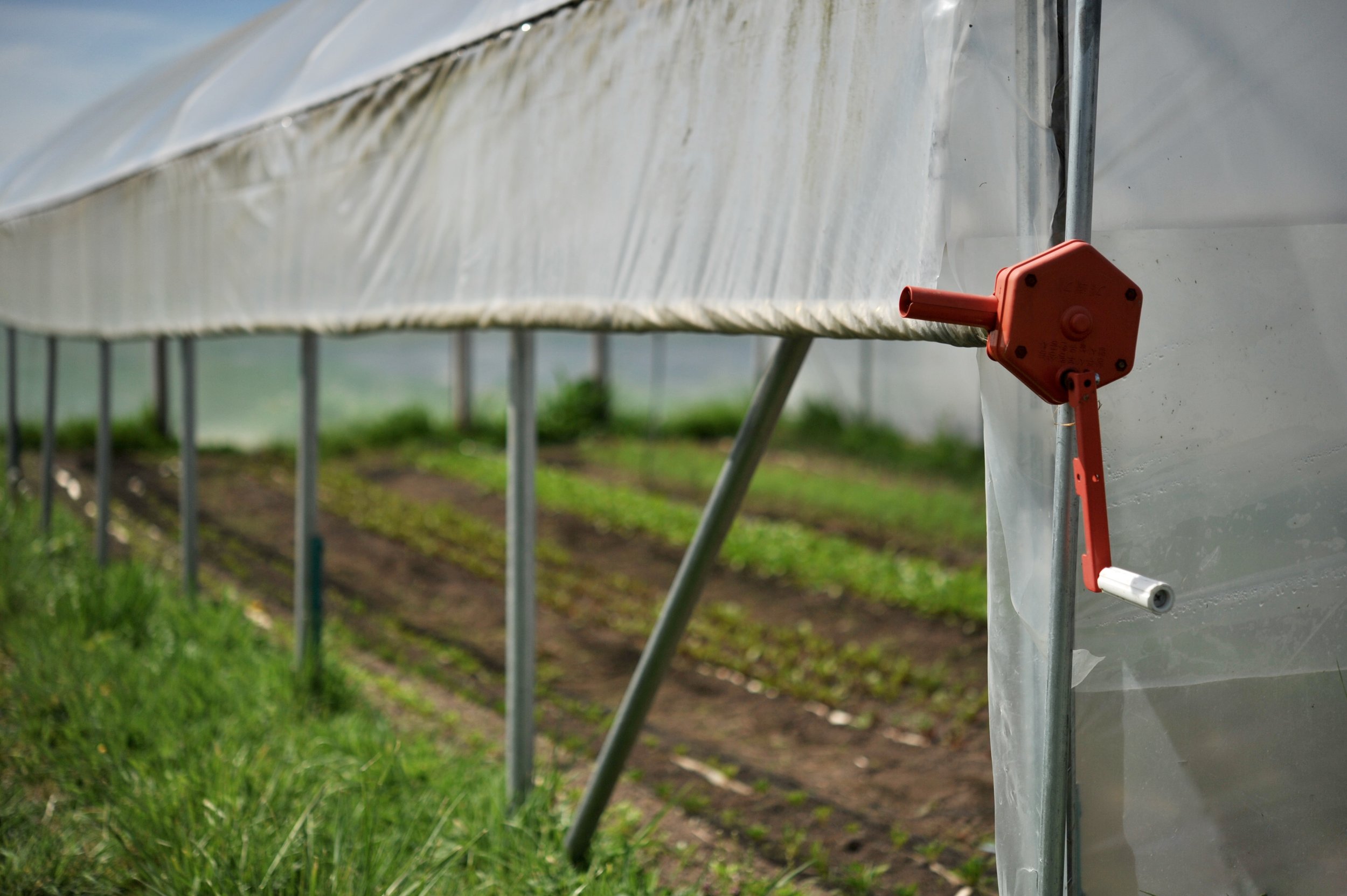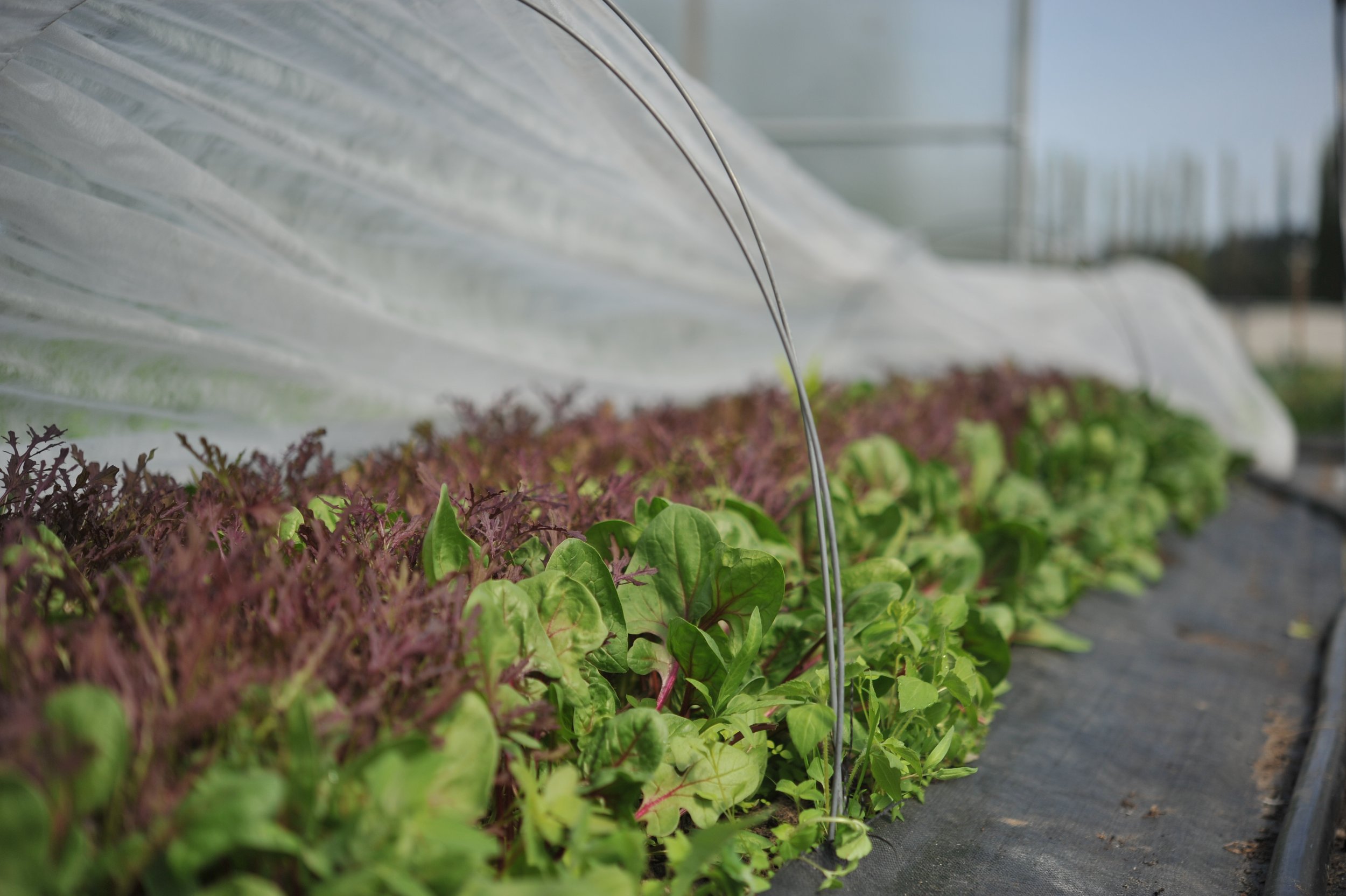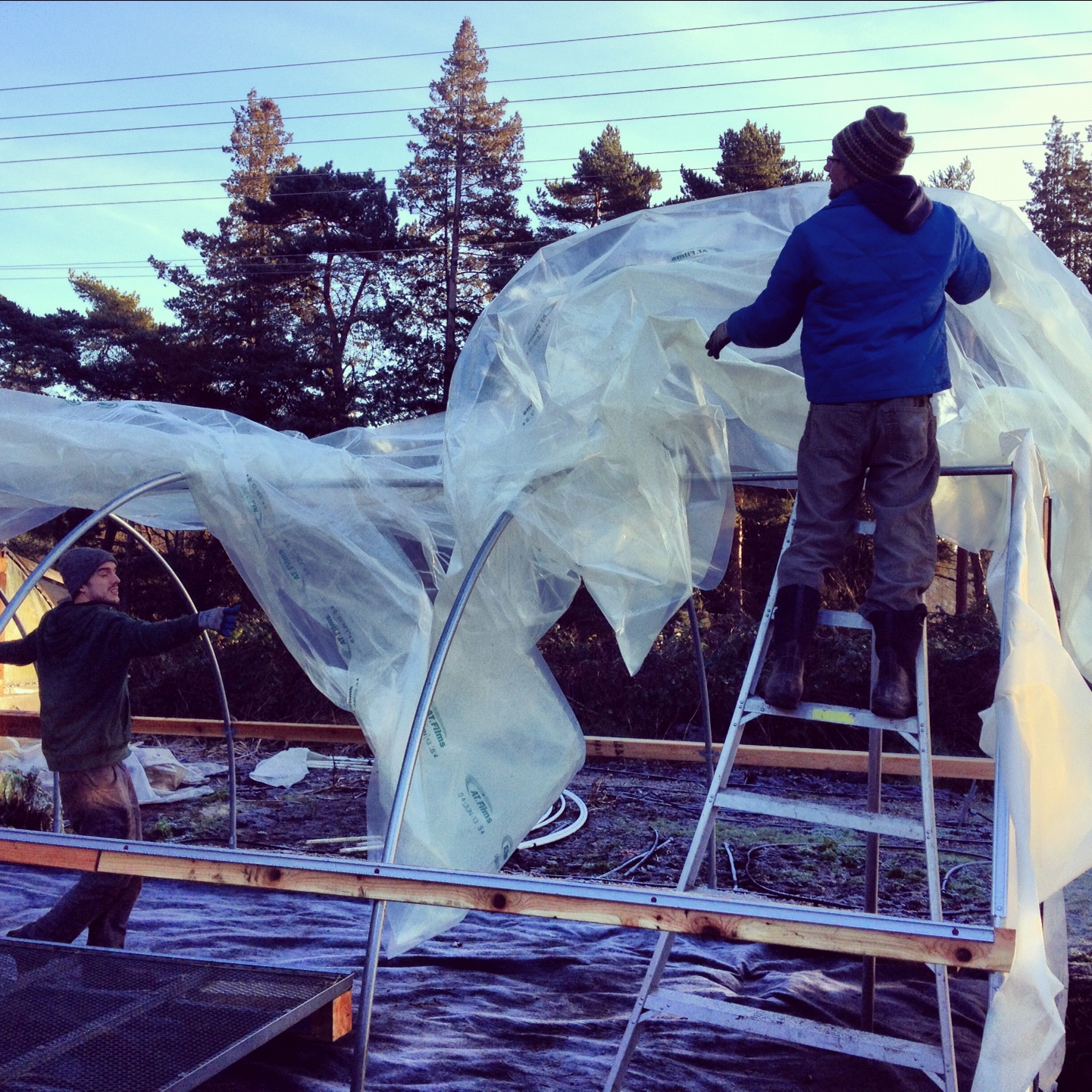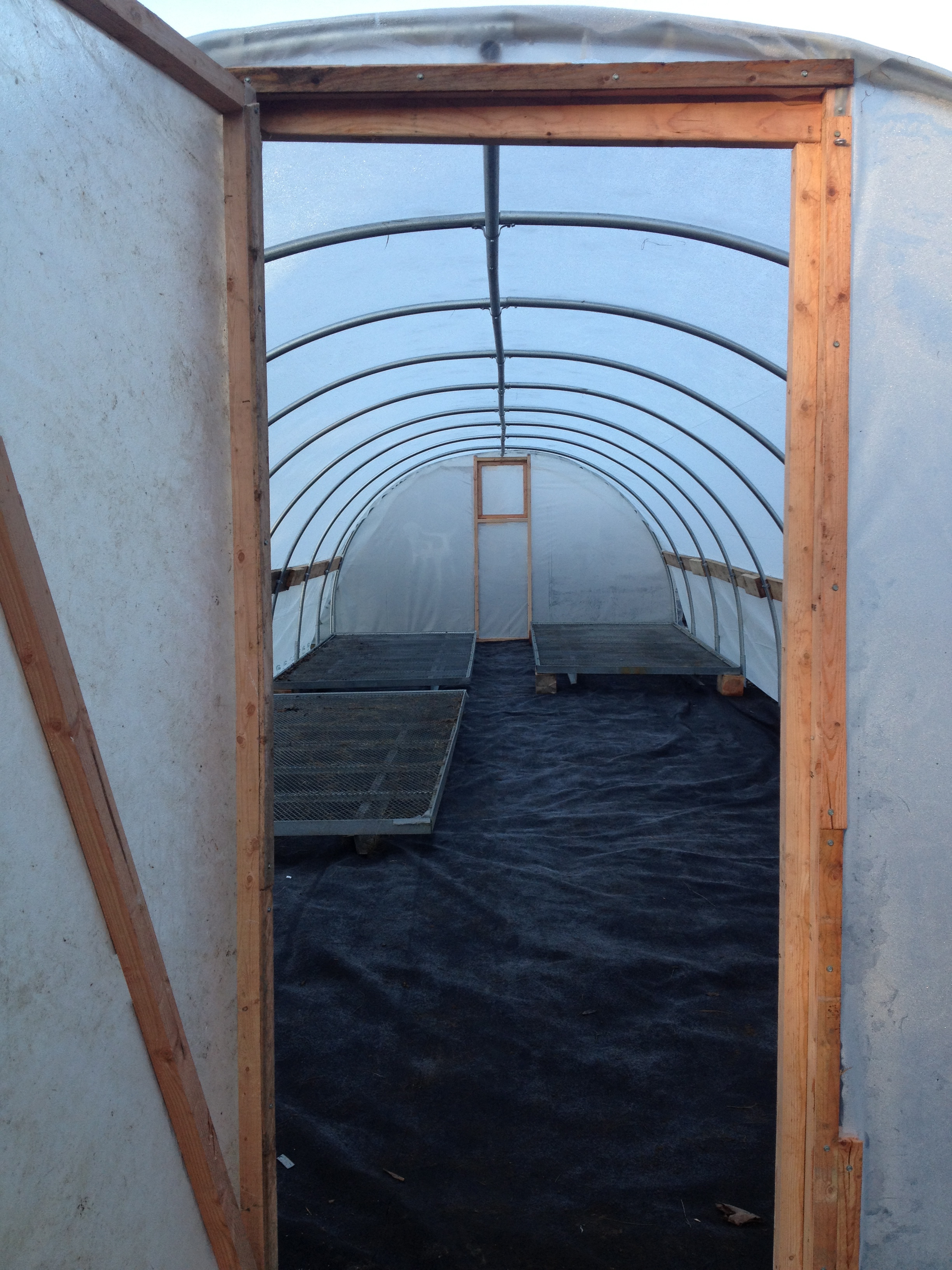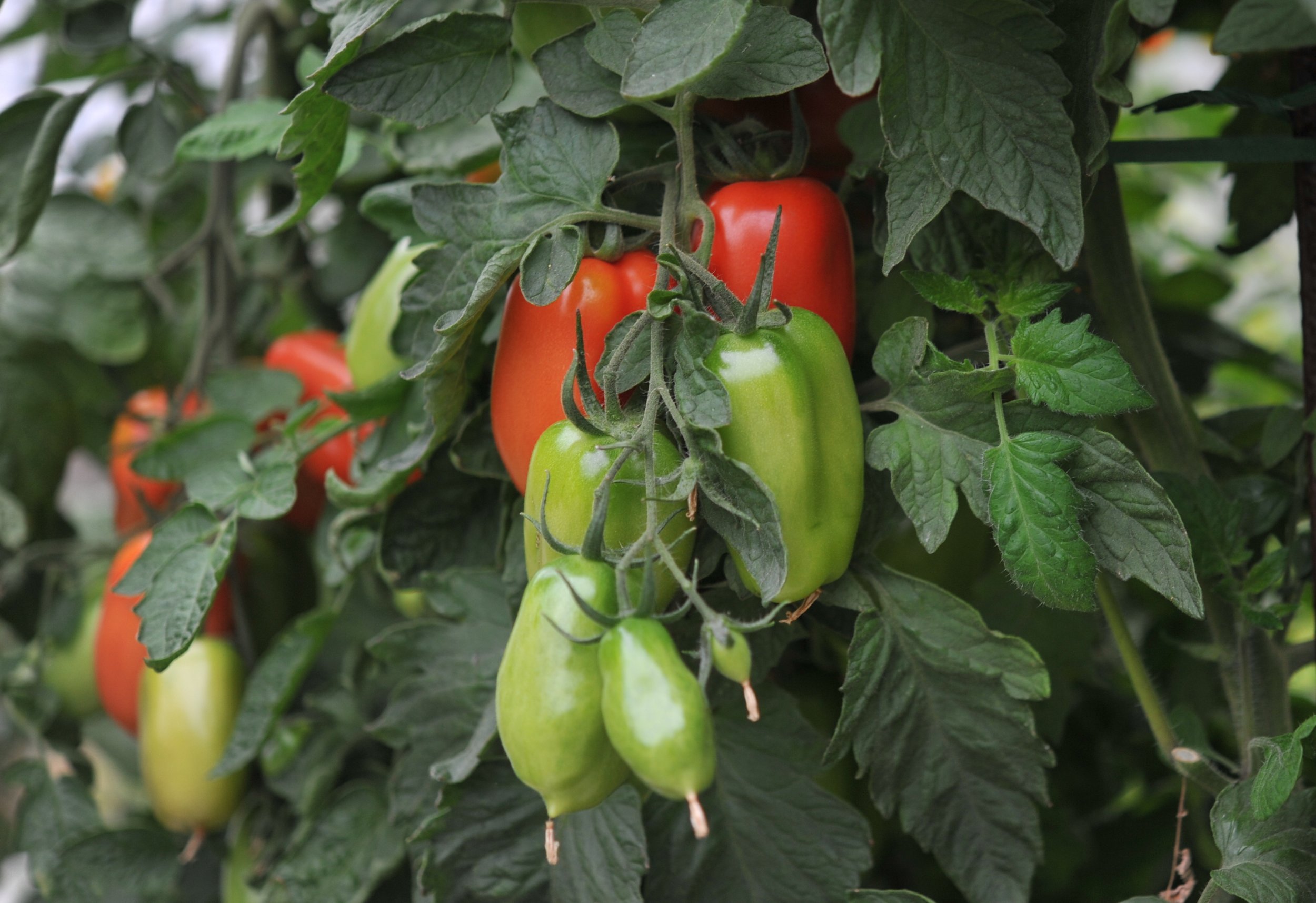This week we’re talking greenhouse management. Specifically, we disucss using high tunnels, hoophouses and greenhouses as production spaces. In a later episode, we’ll address how greenhouses can be used as part of a home plant nursery.
HOW TO LISTEN:
Subscribe on iTunes, Stitcher, Spotify, or any of your favorite podcast players to have new episodes sent directly to your device.
Listen right now in your browser by clicking above.
SHOW NOTES:
In this episode, we discuss:
How growing in large, covered structures can expand a gardeners year-round production potential
Organic management techniques for high tunnels, hoophouses and greenhouses
Roll up sides and interior hoops allow growers to utilize a high tunnel year round:
Important Take-aways:
High tunnel, hoophouse, and greenhouse are essentially interchangeable terms — they all describe an arched or gabled structure that is tall enough to walk into. Some growers use the term greenhouse if the structure has a heat source in it and the term high tunnel if it’s unheated (but this distinction isn’t universally adopted). In an effort to limit confusion, let's refer to these growing structures as High tunnels throughout the episode.
For most season-extension purposes, the expense and complication of adding a light and heat source to a greenhouse are prohibitive. However, there are circumstances for which these extra costs and work might be worthwhile, especially for growers who produce young transplants, so we'll discuss this in our propagation episode (coming early 2022!)
Growing in a high tunnels provides you the freedom to:
work in a protected space over the winter
grow tall crops and grow vertically
install secondary covers (usually in the form of mini hoop tunnels)
grow in diffuse light during the warmest months of the year, when crop growth slows during the sunniest part of the day
Key management techniques:
One issue with permanent high tunnels is that the soil under them is never exposed to precipitation and extreme temperatures. This can lead to nutrient imbalances (high salt levels in particular) and a buildup of pest and disease problems. Careful ventilation, fertilization, and irrigation will help deal with these issues.
Usually, high tunnels have doors or windows on the ends for access and ventilation, and are outfitted with some way to open or roll up the sidewalls to provide for maximum ventilation during hot days. If you have access to electricity, greenhouses can be fitted with automatic ventilation shutters, fans, and heaters for further season extensions.
Removing the plastic during the winter to expose the soil to cool temperatures and precipitation.
Brad, Colin and the SUFCo team building a 12x30’ caterpillar tunnel, high tunnel at the Seattle Urban Farm Co. headquarters:
Like what you hear? Please share our podcast with a friend. Subscribe on iTunes, Stitcher, Spotify, or any of your favorite podcast players to have new episodes sent directly to your device. And we'd really appreciate you showing us some love by leaving a rating and review on iTunes.
Have a topic you'd like see us dig in to? Email us at eb@seattleurbanfarmco.com
More about our special guest:
Brad Halm
Brad’s interest in food production started in a small vegetable garden at the Homestead, an experiential living center at Denison University in Ohio. After graduating, he apprenticed on organic farms around Ohio for several years, then took a position as the CSA (Community Supported Agriculture) Manager for Village Acres Farm in Pennsylvania. He moved to Seattle in 2007 to help Colin start the Seattle Urban Farm Company, and he is still building urban farms to this day.
Books by Brad and Colin:


